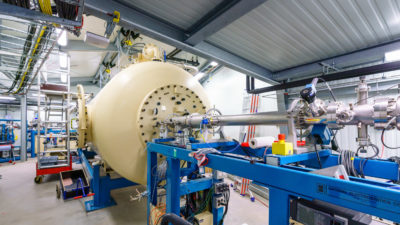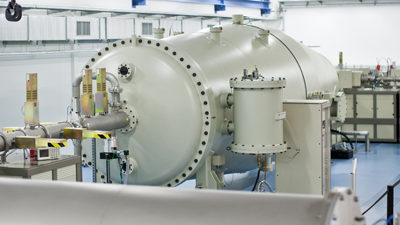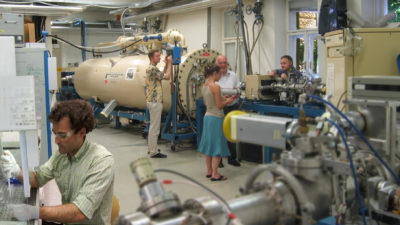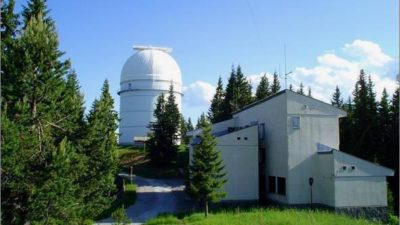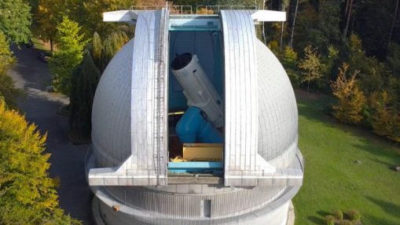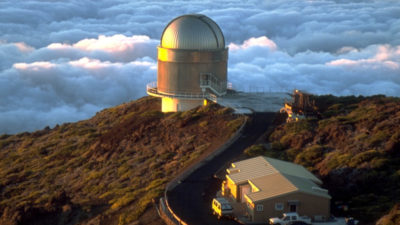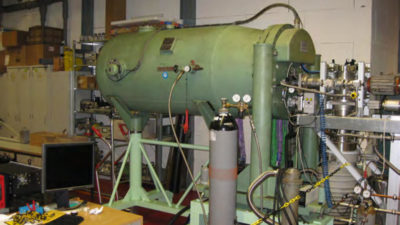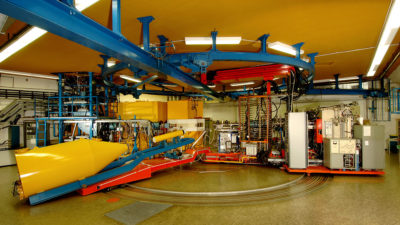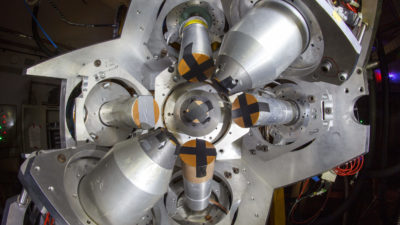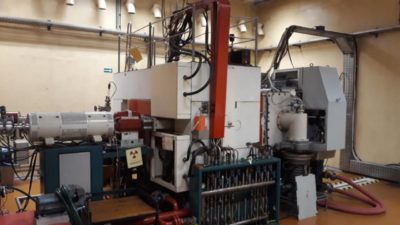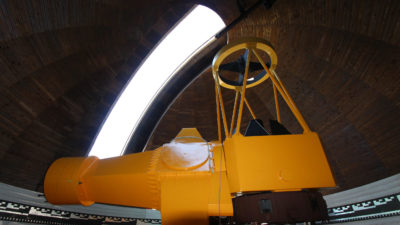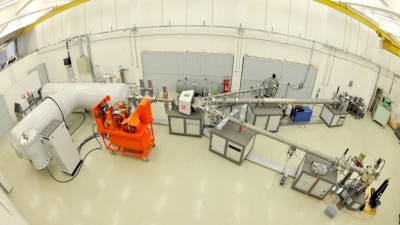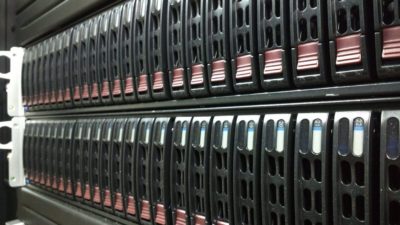10 MV FN Tandem accelerator, University of Cologne (UoC), Germany
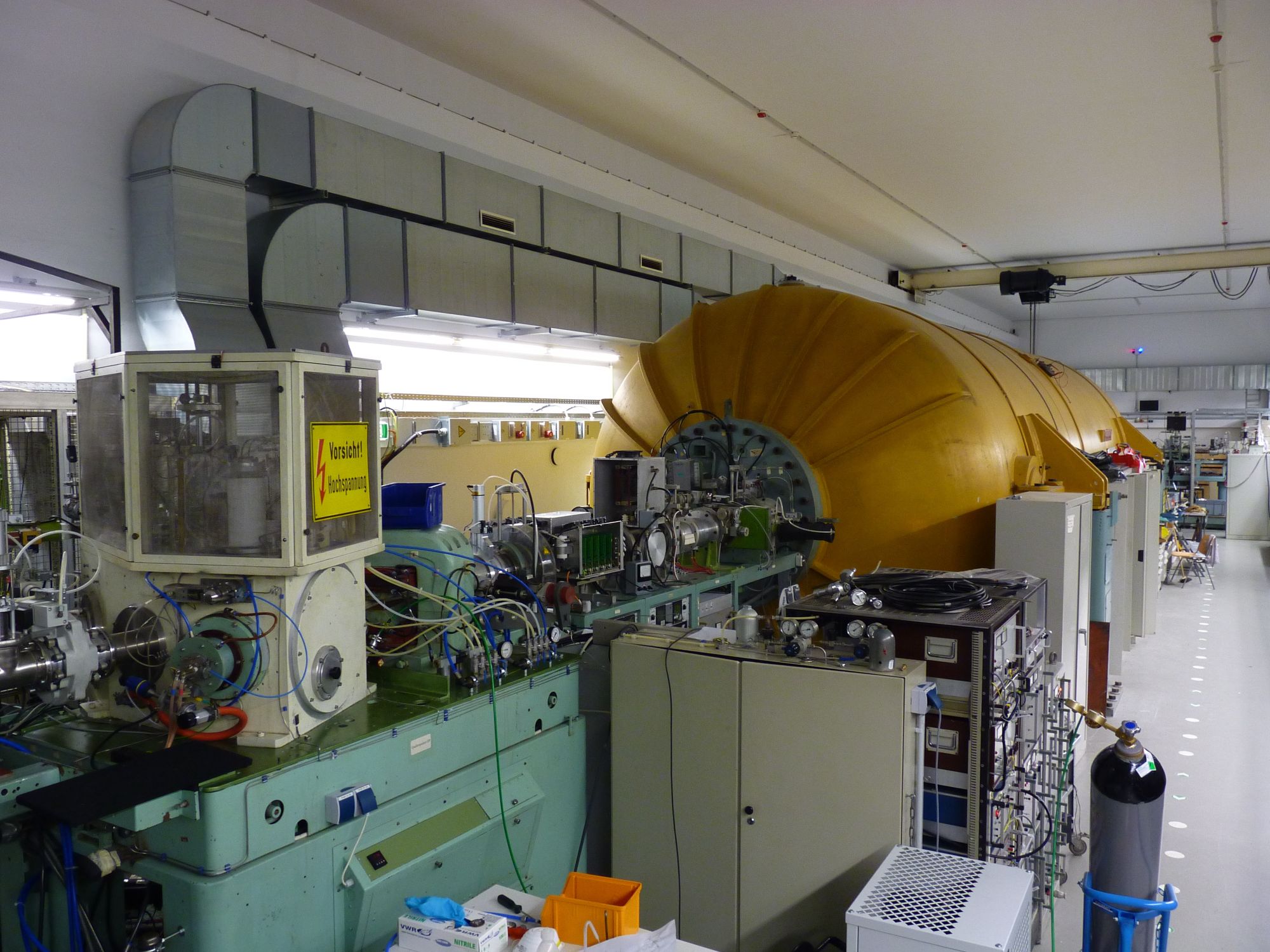
Credit: UoC/IKP
The Institute for Nuclear Physics (IKP) at the University of Cologne (UoC) provides different accelerators, including a 10 MV FN-Tandem and a 6 MV Tandetron accelerator. While the latter one serves as a machine intended solely for Accelerator Mass Spectrometry (AMS) measurements, the 10 MV FN-Tandem accelerator is used for research in nuclear physics and nuclear astrophysics.
The 10 MV FN-Tandem accelerator provides beams of basically any ion-species which can form negative ions in a beam current range between a nA and μA for a consecutive duration of several days. Various experimental setups equipped with several high-purity germanium detectors as well as silicon particle detectors are used for investigations of nuclear reaction rates, nuclear lifetimes, and structures of excited states in atomic nuclei.
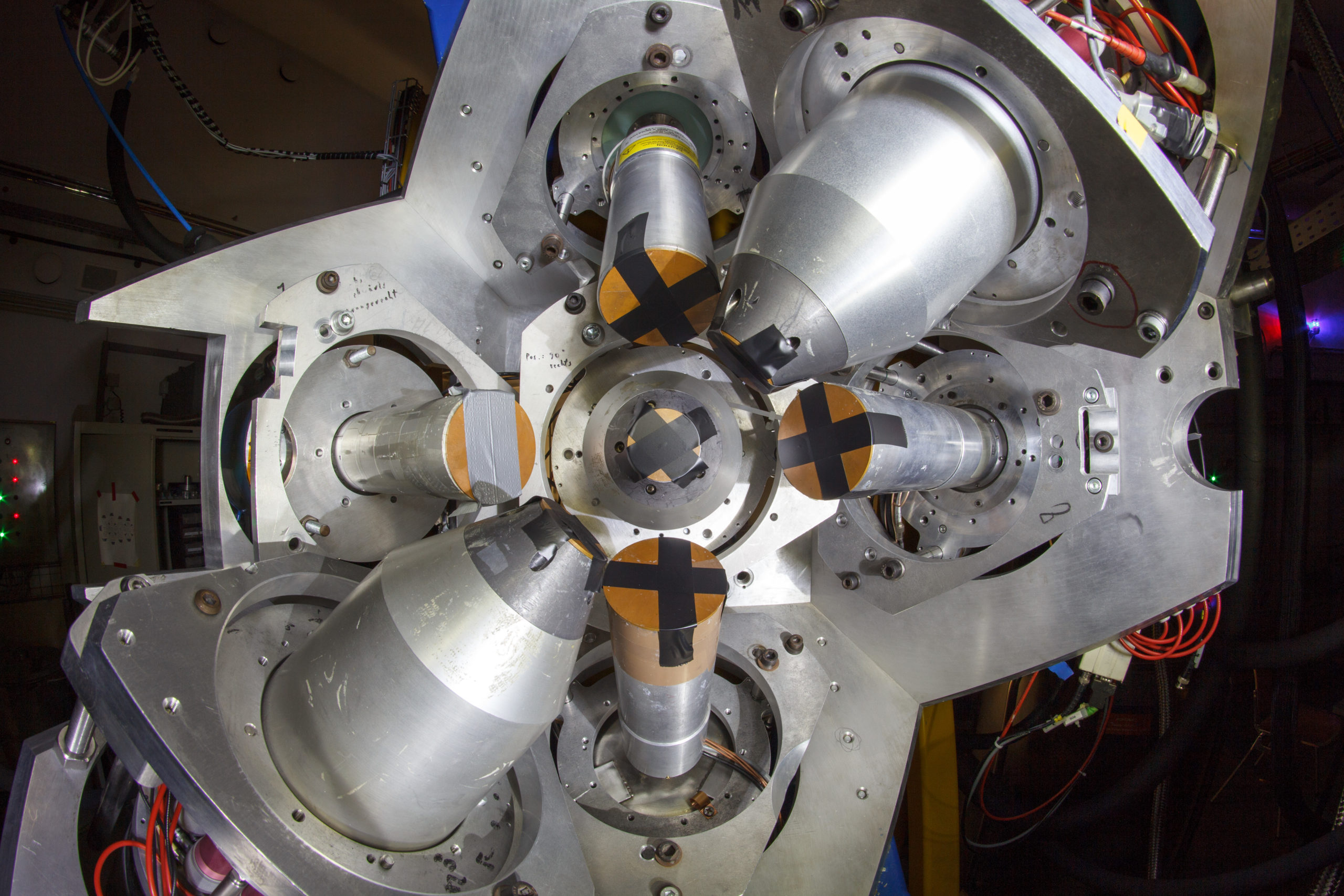
A low-background Counting setup that consists of 2 HPGe Clover detectors mounted in a close face-to-face geometry is available for gamma-ray counting experiments.
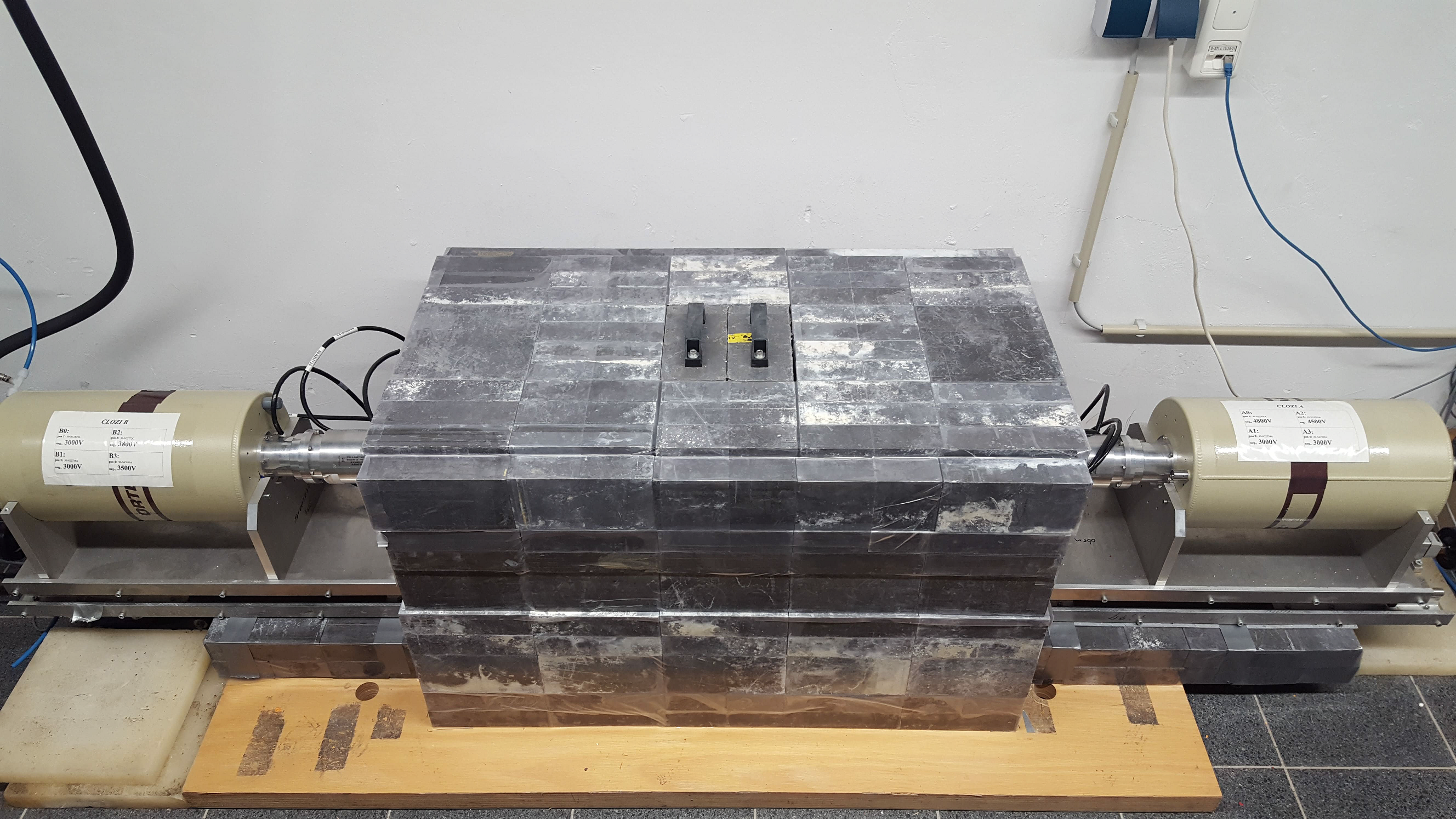
A fully equipped target laboratory is operational in the same department. Hence, on request, targets can be made at the University of Cologne prior to the experiments. During the last years, the number of external users varied between 1 and 4 per year. Usually, external users stay between 4 and 7 nights.
ChETEC-INFRA collection dates and user times:
Contact information:
Country of installation:
- Germany
- everyone whose affiliation is outside of Germany can apply for TNA
Access to be provided:
- 480 beam time hours
Key information at a glance:
Presentation of TNA to UoC at the ChETEC-INFRA kick-off meeting (May 4, 2021):
Presentation of TNA to UoC given at special TNA Event (January 31, 2022):
Website:
